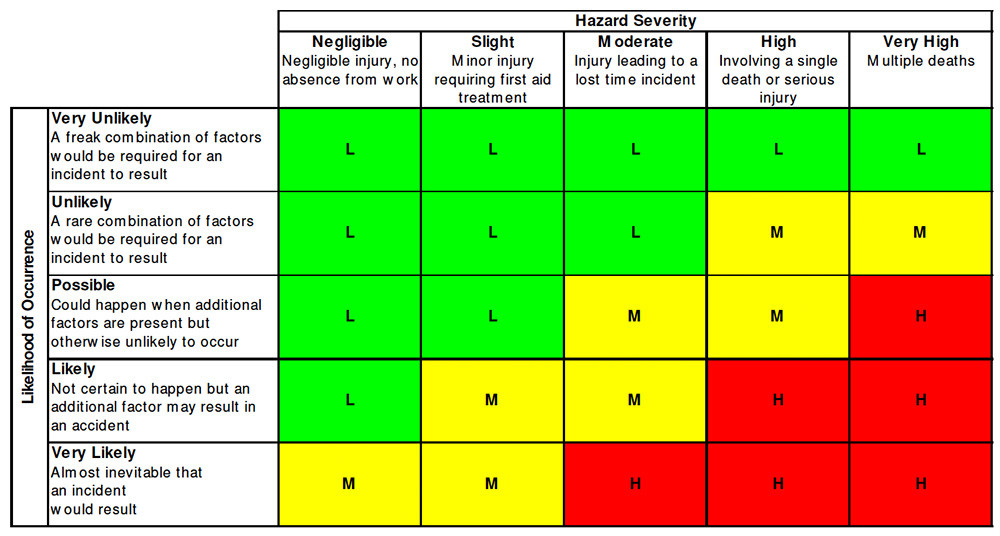Am often asked whether I think a company is making good products. In the objective environment of ASR, you might think this is simple answer, but many seem to struggle with the difference between being a good company and every product being good technically. As an automation product manager at an ISO 9001 company, I worked on products ranging from computers and controllers to I/O and related software. If you are not familiar with ISO 9001, in short it does not ensure quality, but it does require that you demonstrate you have known, consistent processes in place to make products. You can find more details elsewhere but am just using as a backdrop to introduce a product risk assessment aspect that we used to help diverse teams assess risk.
The following chart is an example of a risk assessment matrix that we often used for engineering, marketing, quality and other team members to agree upon the priority of an identified product issue. My employer had evolved this to drive specific actions depending on the determined priority. You might notice that it lacks considerations for things like brand reputation, market alternatives and cost of remediation. These are important considerations and would be part of the evaluation effort. In the end, management would use the overall team input to make a determine what action was taken (if any).

While you might expect that most audio companies are not often dealing with injury or death as a severity, I think this matrix helps with the context of why an audio product issue (minor cosmetic or functional issue) may not be a high company priority.
In the internet age, we have all become more sensitized to brand reputation. While no doubt fortunes are being made and lost on perception, it is still a soft issue. Am not aware of a more standardized assessment of brand reputation, but would be interested if anyone has. Did some quick perusing for a structured approach, but did not find.
The following chart is an example of a risk assessment matrix that we often used for engineering, marketing, quality and other team members to agree upon the priority of an identified product issue. My employer had evolved this to drive specific actions depending on the determined priority. You might notice that it lacks considerations for things like brand reputation, market alternatives and cost of remediation. These are important considerations and would be part of the evaluation effort. In the end, management would use the overall team input to make a determine what action was taken (if any).

While you might expect that most audio companies are not often dealing with injury or death as a severity, I think this matrix helps with the context of why an audio product issue (minor cosmetic or functional issue) may not be a high company priority.
In the internet age, we have all become more sensitized to brand reputation. While no doubt fortunes are being made and lost on perception, it is still a soft issue. Am not aware of a more standardized assessment of brand reputation, but would be interested if anyone has. Did some quick perusing for a structured approach, but did not find.
Last edited:
